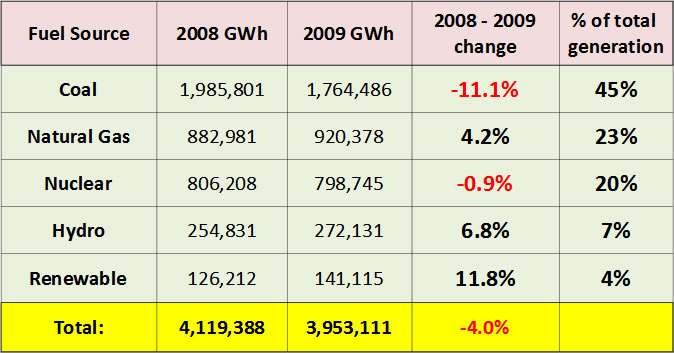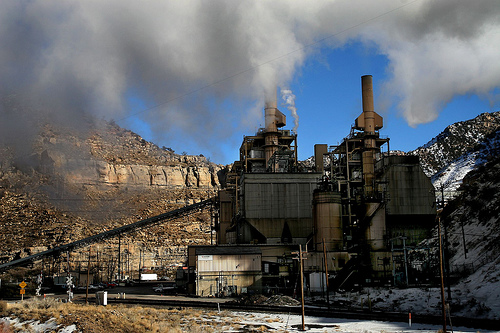There’s some interesting new data out on recent shifts in electricity demand and consumption, courtesy of the DOE/EIA.
In 2008, total U.S. power generation was 4.1 million GWh. In 2009, that fell by 4 percent, to 3.9 million. That’s a 4 percent reduction — clearly the result of the economic slowdown. Nothing surprising there.
What’s interesting, though, is how generation shifted by fuel type. Over the same year, coal-fired power generation fell by 11 percent, from almost 2 million GWh to just under 1.8 million.
 US electricity generation, 2008-09Source: EIA Annual Carbon report, 2010
US electricity generation, 2008-09Source: EIA Annual Carbon report, 2010
Enough numbers. The point is, generation from coal plants fell by more than U.S. electricity demand. Not only did we consume less electricity, we also shifted towards cleaner electricity. Nuclear generation was basically flat during the period, but generation from natural-gas fired assets and renewables were up strongly.
Did we suddenly get religion on clean energy? Nope. We shifted away from coal because even on the margin, coal wasn’t competitive. As natural gas prices fell and the natural gas fleet efficiency rose, many parts of the country saw natural gas become a cheaper marginal source of electricity. Meanwhile renewables, while admittedly expensive to build, are cheaper to run on the margin than any fossil fired power plant, so as they come on line, coal goes off. On a capacity factor basis, the coal fleet fell back to production levels last seen in 1995 (and that’s after 15 years of steadily ramping up its production).
 U.S. coal vs. nuclear generation, 1975-2000
U.S. coal vs. nuclear generation, 1975-2000
Meanwhile, U.S. greenhouse gas emissions fell 7 percent between 2008-09, and the shift away from coal was responsible for 55 percent of those reductions:
 US CO2 emissions, 2009-09Source: EIA Annual Carbon report, 2010
US CO2 emissions, 2009-09Source: EIA Annual Carbon report, 2010
Even absent the fall off in economic activity, shifting away from coal for purely economic reasons saved us 221 million metric tons of CO2 emissions last year. Perhaps not time to pour the champagne yet, but certainly something to cheer about.



